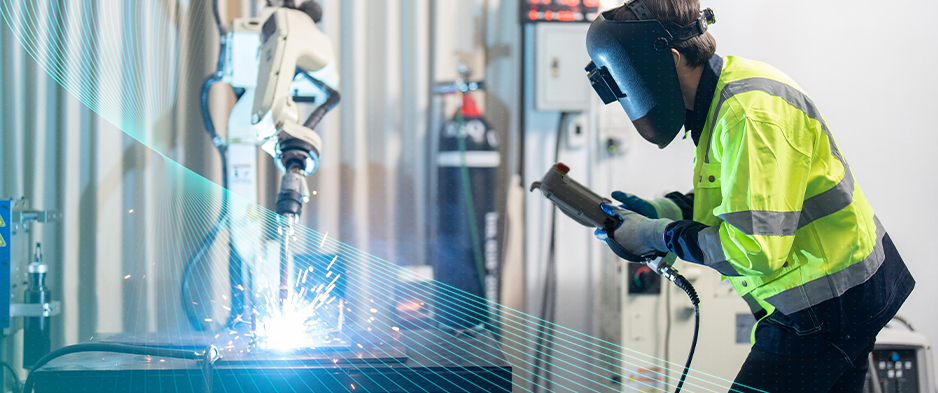The advent of the fourth industrial revolution transformed manufacturing processes through automation, the Internet of Things (IoT) and data exchange. Industry 5.0 takes another step forward in this evolution through greater man-machine integration.
What is Industry 5.0
Although Industry 4.0 is still a relatively new concept, many experts are already talking about a new industrial revolution. It is enough to observe the changes in production and in almost all industrial sectors to understand that a new phase of development is starting and will soon lead to Industry 5.0.
Compared to Industry 4.0, Industry 5.0 looks beyond efficiency and productivity as the ultimate goals. Instead, it aims to strengthen the role and contribution of industry to society and, at the same time, promote and enhance close collaboration and interaction between humans and machines. Thus, it promises to revolutionize the way companies operate by providing them with opportunities for growth through innovative business models.
Industry 5.0: the new man-machine paradigm
It is impossible to talk about Industry 5.0 without having a thorough understanding of the effects that the previous industrial revolution had on work and production. Industry 4.0 has been strongly characterized by the integration of intelligent, connected, and autonomous digital and physical technologies such as the IIoT and robotics. In parallel with the growth of efficiency and productivity, this development has also caused some concerns, such as the risk of permanently replacing the human contribution, with consequent job losses.
With this awareness, Industry 5.0 has the task of emphasizing man-machine integration, both in terms of efficiency and quality. That is, it must represent a paradigm shift from the fully automated processes of Industry 4.0 to a collaborative and symbiotic relationship between man and machine. This through the recognition of the unique skills of both parties to exploit and enhance their combined strengths and achieve new levels of productivity, flexibility, and innovation. This is also supported by Professor Bram Vanderborght of the Brussels Human Robotic Search Center (BruBotics), according to which the goal of Industry 5.0 is “to combine the strengths of man and machines, bearing in mind that safety is the main concern and dangerous tasks should always be performed by robots.”
The human operator is distinguished from the machine by several unique and non-reproducible abilities, such as his problem-solving skills, creativity, intuition, and adaptability. These prove to be invaluable resources that leave the human being a central role in the production process as a collaborator and decision maker. Businesses can benefit from their cognitive abilities and emotional intelligence to improve problem solving, customer satisfaction and overall efficiency.
At the same time, advanced technologies such as artificial intelligence (AI), machine learning, robotics and the Internet of Things make machines equally essential in Industry 5.0. Their ability to follow complex calculations, analyze large amounts of data and provide real-time insights makes them ideal for managing and carrying out repetitive, strenuous, risky, and labor-intensive tasks. In this way, machines can enhance man and his abilities to safeguard his safety, reduce physical effort and improve productivity.

